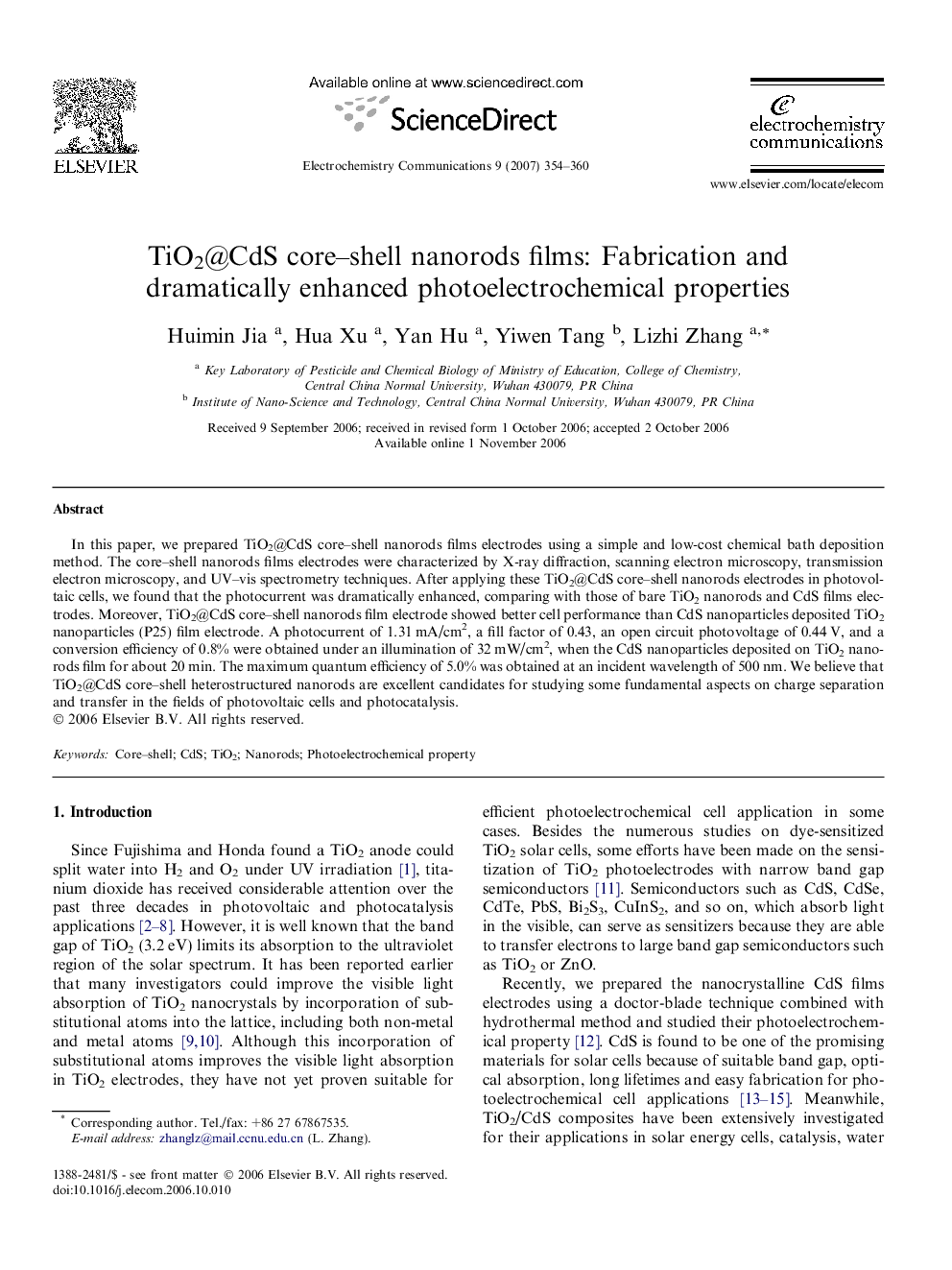| Article ID | Journal | Published Year | Pages | File Type |
|---|---|---|---|---|
| 182628 | Electrochemistry Communications | 2007 | 7 Pages |
In this paper, we prepared TiO2@CdS core–shell nanorods films electrodes using a simple and low-cost chemical bath deposition method. The core–shell nanorods films electrodes were characterized by X-ray diffraction, scanning electron microscopy, transmission electron microscopy, and UV–vis spectrometry techniques. After applying these TiO2@CdS core–shell nanorods electrodes in photovoltaic cells, we found that the photocurrent was dramatically enhanced, comparing with those of bare TiO2 nanorods and CdS films electrodes. Moreover, TiO2@CdS core–shell nanorods film electrode showed better cell performance than CdS nanoparticles deposited TiO2 nanoparticles (P25) film electrode. A photocurrent of 1.31 mA/cm2, a fill factor of 0.43, an open circuit photovoltage of 0.44 V, and a conversion efficiency of 0.8% were obtained under an illumination of 32 mW/cm2, when the CdS nanoparticles deposited on TiO2 nanorods film for about 20 min. The maximum quantum efficiency of 5.0% was obtained at an incident wavelength of 500 nm. We believe that TiO2@CdS core–shell heterostructured nanorods are excellent candidates for studying some fundamental aspects on charge separation and transfer in the fields of photovoltaic cells and photocatalysis.
